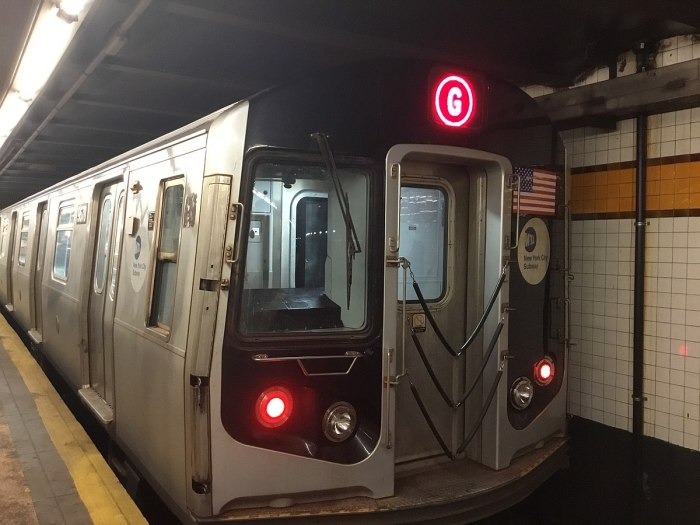
The rumor circulated over the weekend. On Monday, it was still making the rounds: Immigration and Customs Enforcement agents were setting up checkpoints near the intersection of Roosevelt Avenue and Junction Boulevard in Jackson Heights.
“MUCH OF THE 7 LINE HAS BECOME A DANGEROUS AREA FOR UNDOCUMENTED PERSONS,” said one version of the message that spread via text and on social media. “COPY AND PASTE, DON’T SHARE.”
There was no evidence, but staffers from Councilmember Julissa Ferreras-Copeland’s office scrambled to see whether the rumors were true, reaching out to small businesses and advocates in the area. Officials from Make the Road New York, a community organizing group that has offices a few blocks from the intersection, quickly found they couldn’t confirm any such tactics.
“This is a complete mess,” said organizer Bianey Garcia, 26.
President Donald Trump’s executive orders on immigration and border security instituted vastly expanded priorities for ICE, putting undocumented residents concerned about mass deportations on notice. The real question became: Would he do it?
This is what fear looks like
Over the weekend, ICE confirmed a nationwide “enforcement operation” took place last week. In the New York City area, ICE said they’d arrested a total of 41 people, short of the 58 arrested in a similar action last August, back in Obama’s America.
But the wild rumors highlight the real fear that Trump will exceed his predecessor as Deporter-in-Chief.
For Garcia, there are enough battles to face without spreading rumors about false ones, and much work to do to prepare for those real fights.
When she first heard about the supposed checkpoint on Roosevelt Avenue, she said she and fellow organizers rushed to the site. What did they see? “Nothing.”
They handed out some 2,000 fliers with information about immigrants’ rights when dealing with ICE and the police, who largely do not cooperate with immigration officials in New York City.
But the information didn’t stop the panic.
On Monday, Garcia said, she got a call alerting her to another supposed ICE action on Roosevelt and 71st. She asked a friend nearby to take a look. The friend sent back pictures of FDNY leaflets.
But for those worried about exile from family, new jobs, and adopted country, it doesn’t take much to arouse suspicions in times like these.
Staying wary — and prepared
Monday afternoon, however, the misinformation was still circulating.
John Lopez, 40, sitting next to a cell-phone display near the Junction Boulevard corner, said a friend had shown him a WhatsApp message about the “checkpoint” earlier that day.
“People are scared,” he said, citing other false stories about ICE agents popping up in the neighborhood — in stores or on street corners. He’d been there all weekend, and it had just been business as usual. Vendors in the long line of food trucks on Warren Street agreed. One, whose partner said she’d been concerned about the rumor even knowing it wasn’t true, retreated into the back of her cart.
To what extent are undocumented New Yorkers in more danger from ICE than they were before Trump’s election? From the limited information released by ICE, current targeting could be similar to the past. Thirty-eight of the 41 arrests made in the New York City area were of those who ICE said had criminal convictions, though the agency did not clarify what those convictions were for or explain why ICE picked up the other three individuals.
Information on who exactly was picked up and why could become clearer as the week progresses, says Adriene Holder, attorney-in-charge of civil practice at the Legal Aid Society. Lawyers from Legal Aid are learning more from visits with clients and information from families.
Under the previous administration, some immigrants who had already received orders of deportation but were low-priority were required only to have yearly check-ins with ICE, says Holder. Recently, some Legal Aid clients had been told to come in earlier. “That has given us some pause,” she says.
But while advocates and lawyers watch closely to see if Trump ramps up the deportation beyond rhetoric, fear is “terrorizing our communities,” says Holder.
Legal Aid started a 24-hour hotline on the issue Sunday morning. They received more than 50 calls in the first 24 hours. “Folks are telling us they aren’t leaving their homes,” Holder said, some afraid to take kids to school or go to the hospital due to the new and vague enforcement priorities.
Legal Aid and other groups have been trying to combat the uncertainty with information and preparation — telling those affected to save money in emergency funds; carry green cards or copies everywhere; create plans for children should their parents be deported.
The new normal.

































